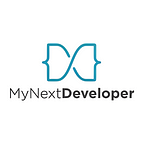What Are the Security Concerns Associated with Using No-Code Platforms?
No-code platforms have revolutionised how we build software. They allow anyone, regardless of technical skill, to create applications. But, as with all technological advancements, there are security concerns. Understanding these concerns is crucial. Why? It is important to ensure that no-code solutions are safe and reliable.
What Are No-Code Platforms?
No-code platforms let users create apps without writing any code. They use visual interfaces and pre-built components. Users drag and drop these components to build their applications. This ease of use makes no-code platforms very popular. Small businesses, startups, and even large enterprises use them to speed development.
The demand for digital solutions is ever-growing. No-code platforms meet this demand by making development accessible to everyone. They lower costs, reduce development time, and empower non-developers.
Understanding the Various Security Concerns:
While no-code platforms offer many benefits, they also come with security risks. These risks can expose sensitive data and compromise systems. Let’s explore some of the main security concerns when it comes to using no-code platforms.
- Data Security: One of the primary concerns is data security. No-code platforms often store data in the cloud. This centralization can be a double-edged sword. On one hand, cloud providers invest huge sums in security. In contrast, a single breach can expose large amounts of data.
If the platform does not encrypt data, there are chances of exposure to sensitive information. This includes personal data, financial records, and proprietary information.
Users must understand who owns the data. Some platforms may claim ownership of the data stored on their servers. This can lead to issues if the platform suffers a breach. - Access Control: Access control is critical for maintaining security. No-code platforms often simplify access management, which can lead to vulnerabilities. If not managed in the right direction, users may gain access to sensitive areas.
No-code platforms often integrate with other services. Each integration can be a potential security risk. Unauthorized access through these integrations can lead to data breaches. - Application Security: Applications built on no-code platforms need robust security measures. The platform should provide tools to secure applications. But, users also need to understand best practices. No-code platforms may be vulnerable to code injection attacks. This occurs when malicious code gets inserted into the application. Ensuring input validation is key to preventing these attacks.
Platforms must update and patch their systems timely. Users need to ensure their applications are up-to-date. Failure to do so can leave applications vulnerable to exploits. - User Authentication: Proper user authentication is essential for securing no-code applications. Weak authentication can lead to unauthorized access. MFA stands for Multi-Factor Authentication. Enforcing MFA means adding an extra layer of security. It involves users providing two or more verification factors. This makes it difficult for hackers to gain access.
SSO suggests Single Sign-On. It allows users to access several applications with one set of credentials. While convenient, it can be a risk if the single sign-on credentials are compromised. - Compliance and Regulations: Compliance with regulations is a major concern. Different industries have different regulatory requirements. No-code platforms must support compliance with these regulations.
Platforms must follow data protection regulations like GDPR and CCPA. Non-compliance can lead to heavy fines as well as put you in legal trouble. For instance, industries like healthcare and finance have many strict regulations. Platforms must provide features that help meet these specific compliance requirements. - Vendor Lock-In: Vendor lock-in is another concern with no-code platforms. This occurs when it is difficult to move applications and data to another platform.
Users should ensure that data exportation is without any difficulty. This reduces the risk of being locked into a single platform. Another risk is the huge dependence on a single vendor. For instance, if the vendor goes out of business or experiences downtime. Diversifying and having a contingency plan is crucial. - User Education and Awareness: User education plays a critical role in security. No-code platforms make development accessible, but users must understand security basics.
Providing training on security best practices is essential. Users should know how to secure their applications and data. Regular updates on new security threats are a vital step. Knowing how to mitigate them helps maintain a secure environment.
Conclusion
No-code platforms are transforming the way we build applications. They offer speed, accessibility, and innovation. Yet, never overlook security concerns. This includes data security, access control, application security, user authentication and compliance. Not only this but vendor lock-in and user education as well pose a risk.
By addressing these concerns, businesses can leverage the power of no-code platforms. They can also keep their data and applications secure. Thus, it is necessary to make security a priority in your no-code development journey.
Ready to build your tech dream team?
Check out MyNextDeveloper, a platform where you can find the top 3% of software engineers who are deeply passionate about innovation. Our on-demand, dedicated, and thorough software talent solutions are available to offer you a complete solution for all your software requirements.
Visit our website to explore how we can assist you in assembling your perfect team.
